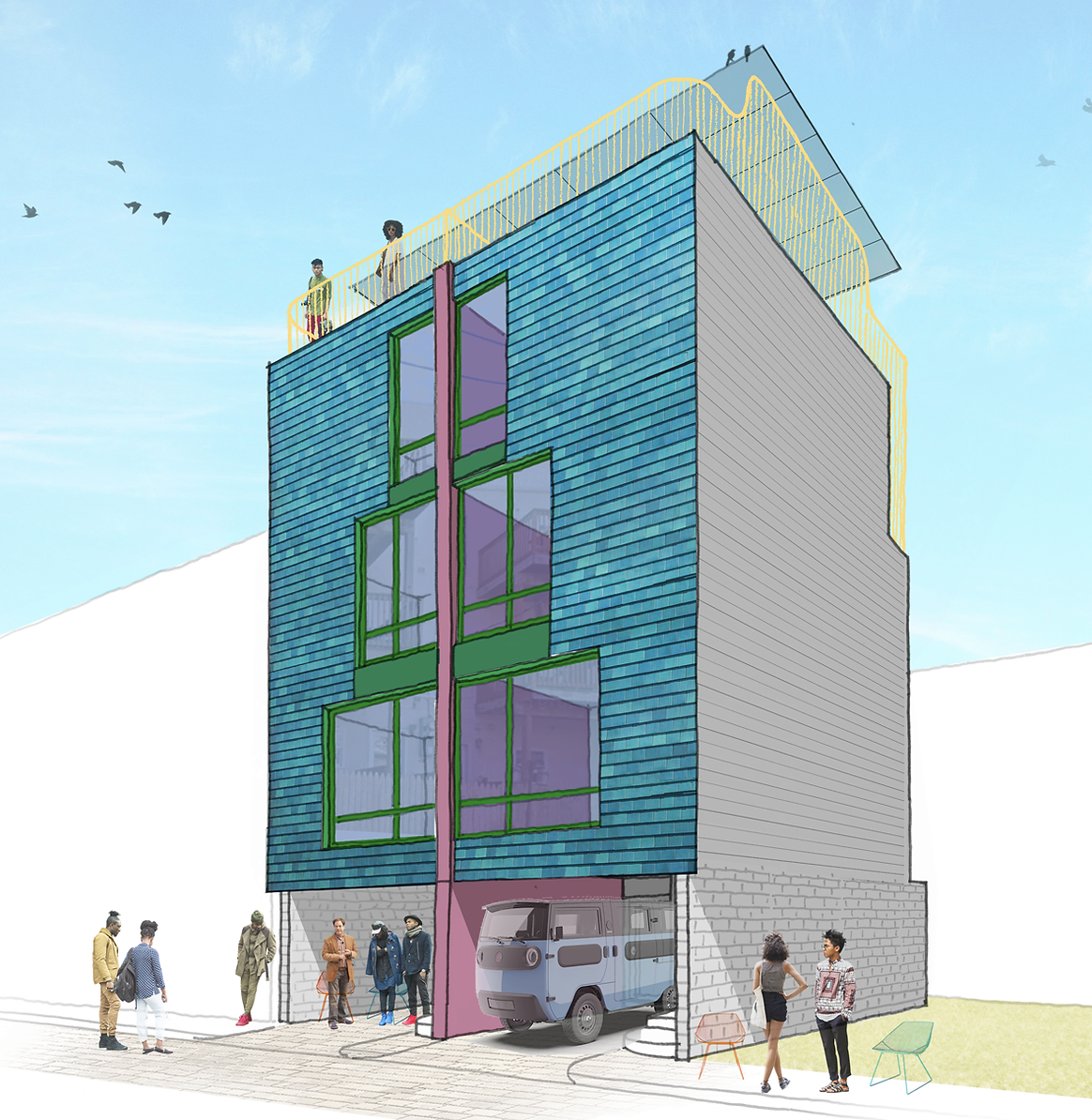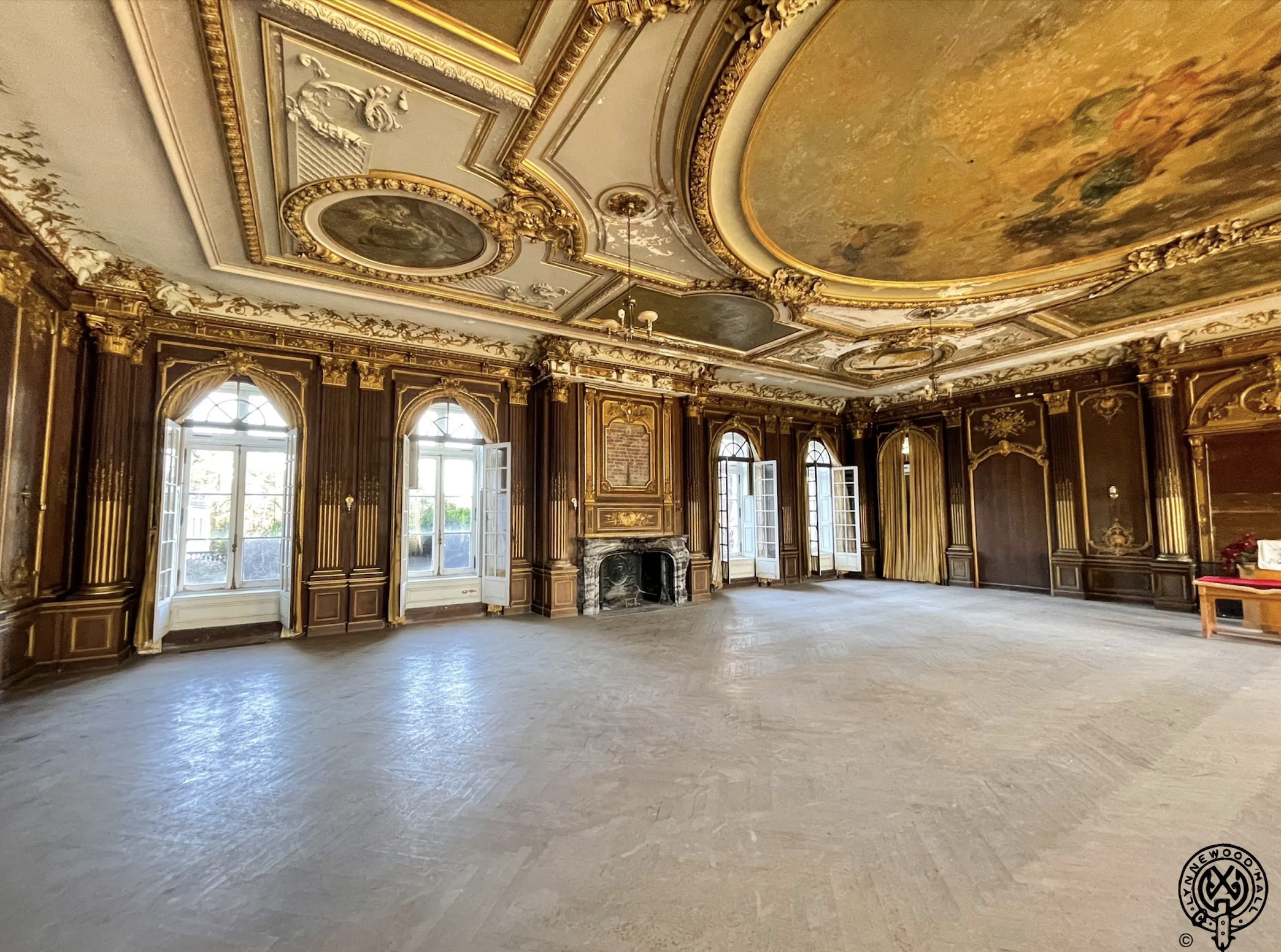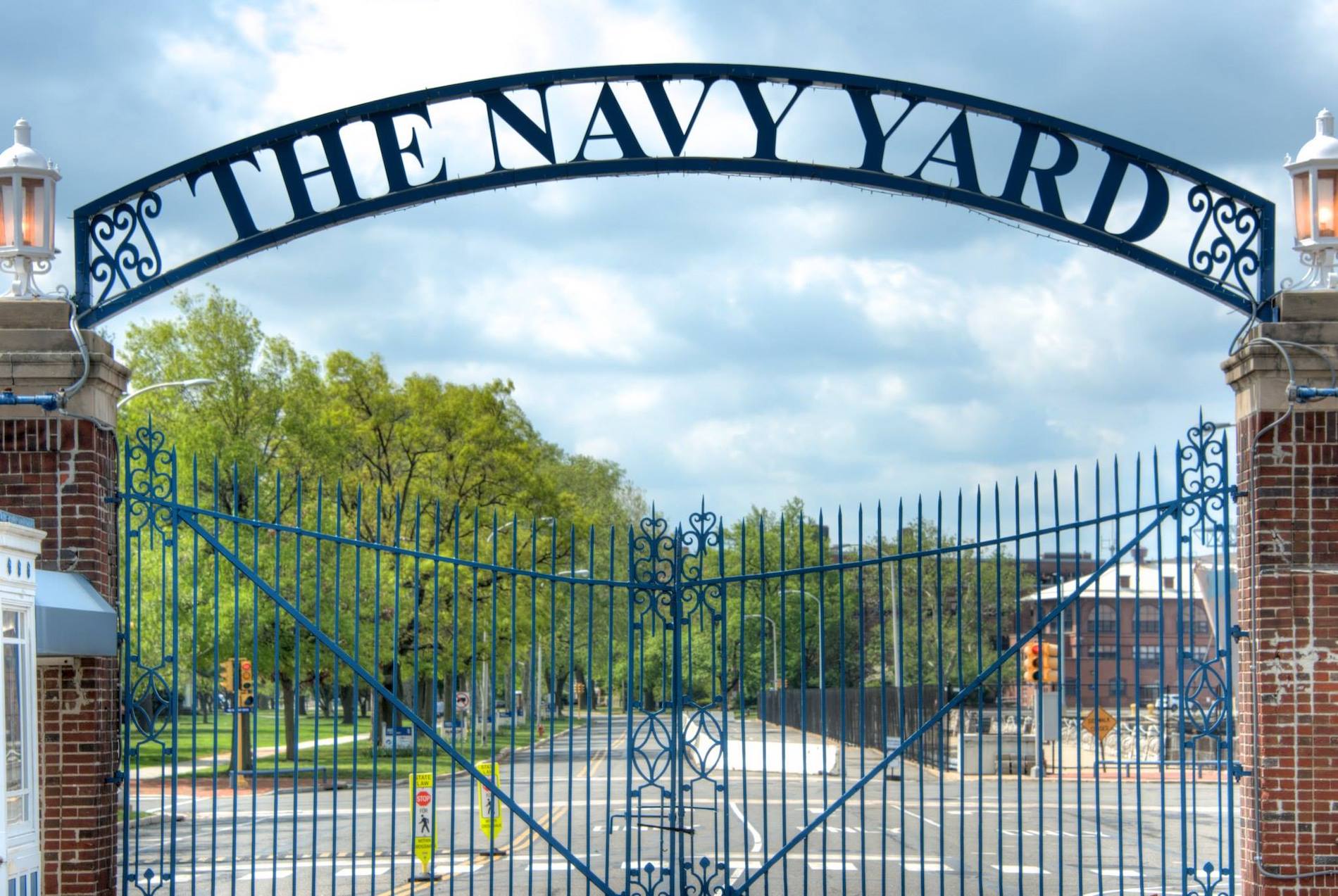architecture
The Secret Life of Buildings: Banking on Architecture
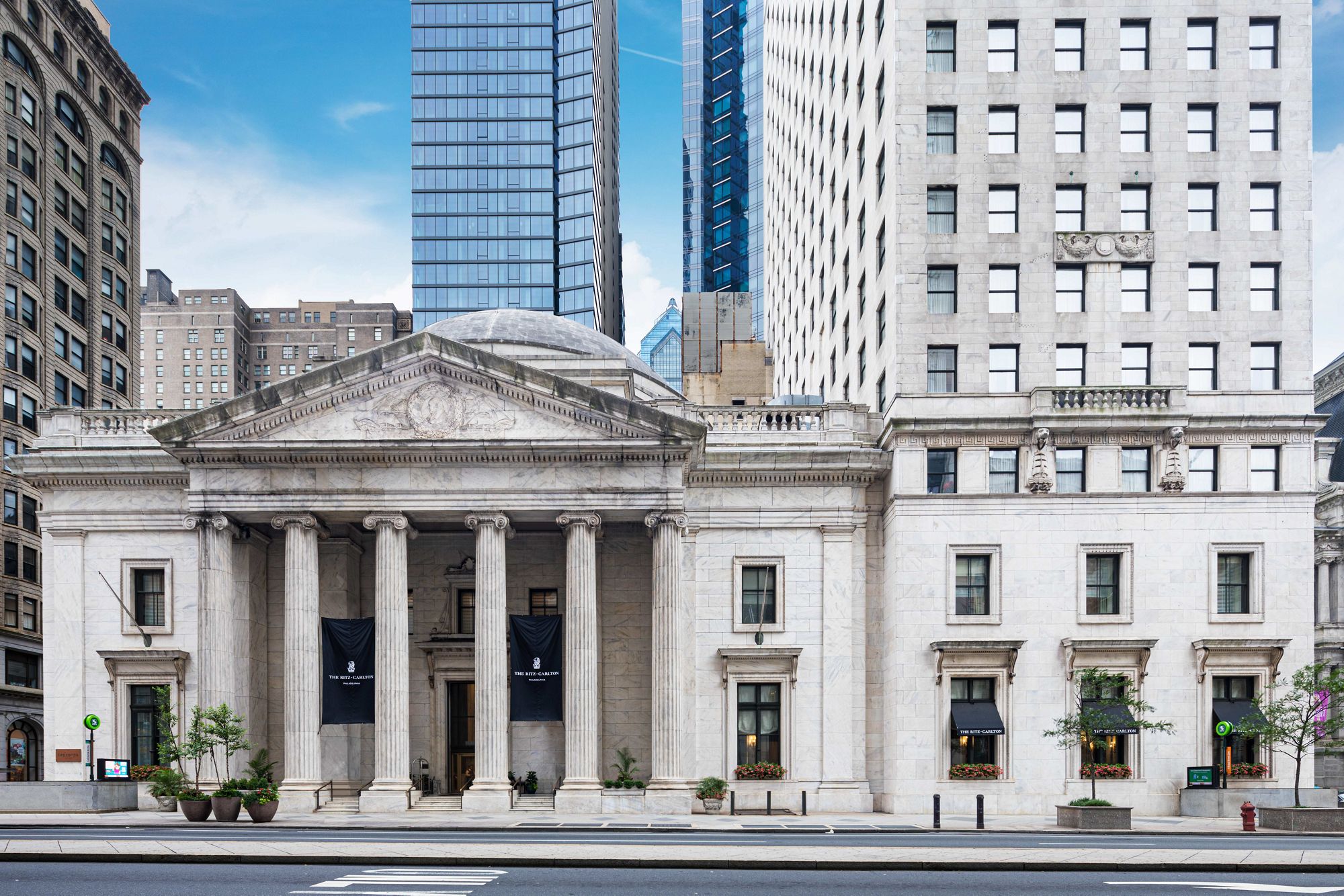
From neoclassical architecture to mid-century modern, many of Philadelphia’s finest buildings were originally designed as financial institutions. In recent decades, these majestic architectural structures have been repurposed in unexpected ways. We invite you to take a tour of former banks that are great examples of adaptive reuse, where you may now partake in dinner for two, host a wedding, or even invest in a unique condo.
Girard Trust Company
Designed by Furness, Evans & Co., 1904-1908, this elegant neoclassical building on the northwest corner of Broad and Chestnut featured a marble 104 ft high rotunda modeled on the Pantheon in Rome. In its time, it was the largest dome in the Western Hemisphere.
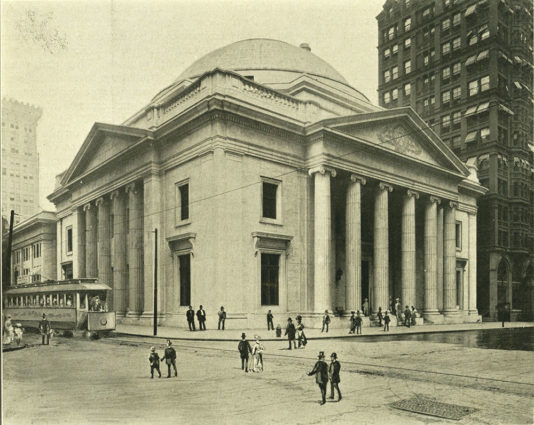
In 1923, the adjoining eight-story Girard Office Building, designed by McKim, Mead, and White, was added and, in 1931, it was expanded to 31 stories.
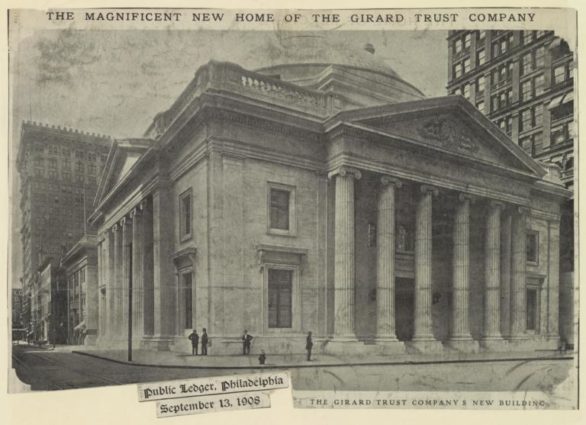
In 2000, the historic bank reopened as the Ritz Carlton Hotel. Guests now sip cocktails on velvet settees in the magnificent rotunda before visiting the spa, enjoying dinner, or attending a lavish wedding.
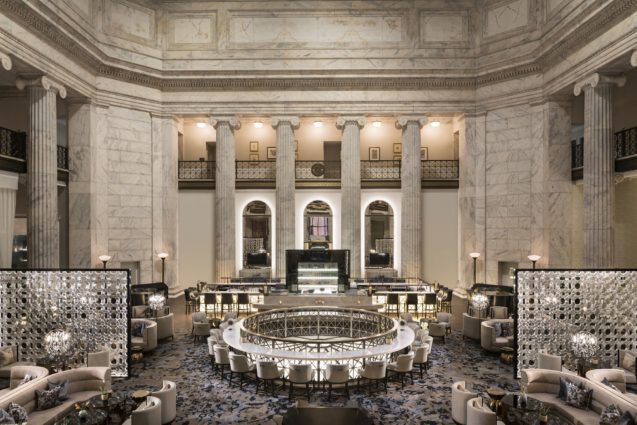
The brass clock and original lighting fixtures still remain, as does the original carved wood paneling. This paneling is made out of French walnut, a wood that is now extinct. The adjoining former office tower is home to 301 guest rooms and suites.
Old Federal Reserve Bank Building
French-born architect Paul Philippe Cret, who settled in Philadelphia at age twenty-seven to teach architectural design at UPenn, designed this Classical Revival building in 1931 at 925 Chestnut. The building featured sculptures of the goddess Athena by French sculptor Alfred-Alphonse Bottiau. Faced with Vermont marble, the building was added to the National Register of Historic Places in 1979 and is now part of the campus of Thomas Jefferson University Hospital Regional Cancer Care Center.
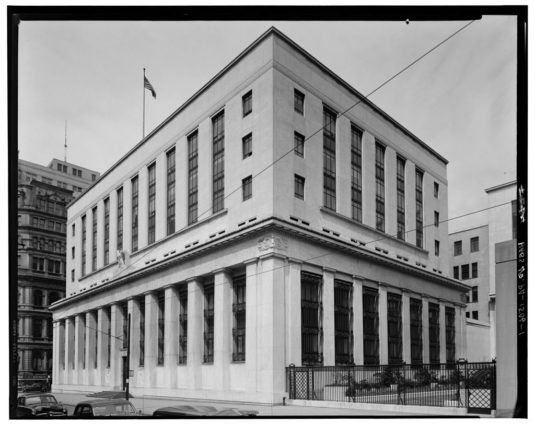
Centennial National Bank
Built in 1876 at the corner of 32nd and Market, this Venetian Gothic building was designed by Frank Furness. The building is constructed of red pressed brick, with bands of black brick, brown sandstone, and sparkling glass tiles on the tympanum of its arch under a gabled roof.
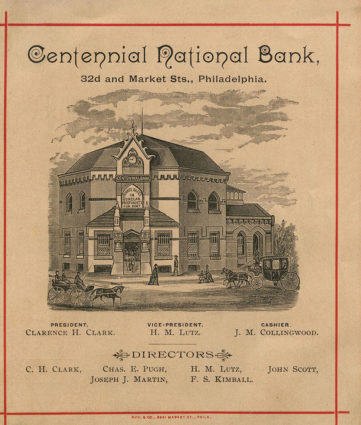
In 1976, it was purchased by Drexel University, and, following renovation, it was re-dedicated in 2002 as the “Paul Peck Alumni Center,” to house the university’s alumni relations center and an art gallery.
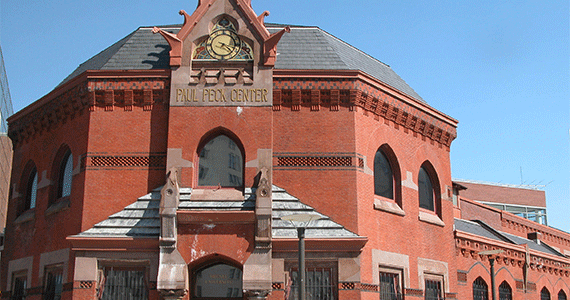
The National Register nomination called it “one of the major surviving works of Frank Furness, one of the major examples of Victorian architecture in Philadelphia and one of the best pieces of architecture in West Philadelphia.” Other notable Furness-designed banks include the Northern Savings Fund building at 6th and Spring Garden, home to Di Bruno’s Banca, and Kensington National Bank, which is currently being renovated into a mixed-use building with commercial and residential units.
The First Bank of the United States
Built in 1795, The First Bank is the oldest bank building in America. Designed by Philadelphia architect Samuel Blodget Jr. in Classical/Revival style, it was built while Philadelphia was still the nation’s capital.
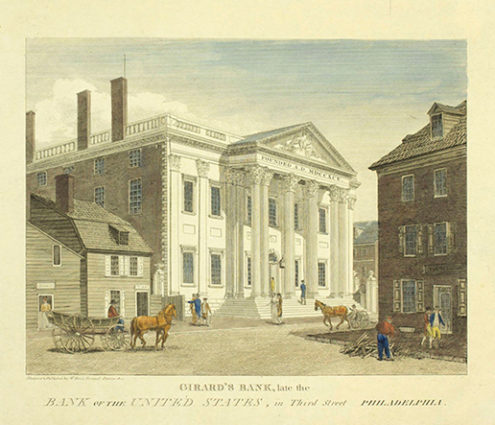
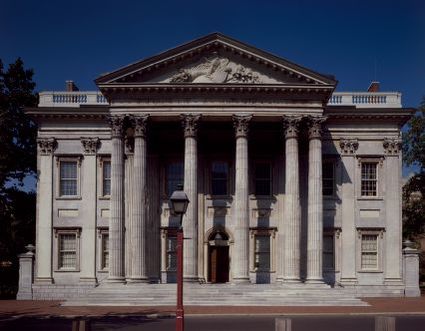
In 1812, it was purchased by Philadelphia financier Stephen Girard for use as his private bank. It was restored to its original state in1976 for the Bicentennial. You may wander around Stephen Girard’s former private bank these days after you pay admission to the Civil War Museum which makes it home there. Originally founded in 1888, the Museum was housed at 18th and Pine Streets from 1922 until 2008. In 2016, it moved to its current location in the historic First Bank of the United States.
The Bank Building
Built in 1857 at 421 Chestnut as the original headquarters of Philadelphia National Bank, it was designed by John M. Gries in the Italianate style, modeled on Renaissance palaces of Venice.
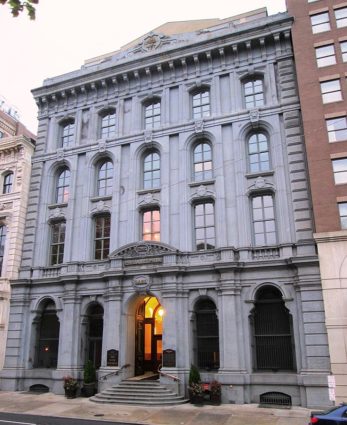
The building originally had a hall in the rear that was topped with a cast-iron dome which was taken down in 1892. Other alterations were made in 1900, including the front door and window cast-iron grills. For a while, it served as an office building. “The Bank Building” now contains luxury condos known as the Bank Building Residences at the Omni.
Cayuga Federal Savings Bank
Chances are, you’ve had a Margarita or two in what had been Cayuga Bank at 13th & Sansom. This building houses El Vez one of Philly’s first Mexican restaurants, which was opened by Stephen Starr in 2003. The building dates back to the mid-19th century. It got a modern facade in 1960 by architect Philip Mastrin. This is one of the few surviving buildings from this now-defunct Cayuga bank known for its modern design.
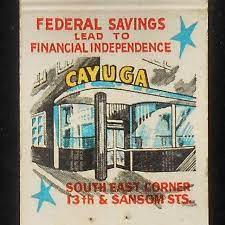
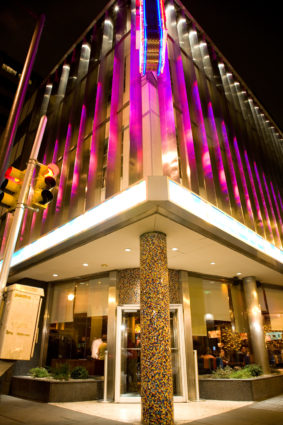
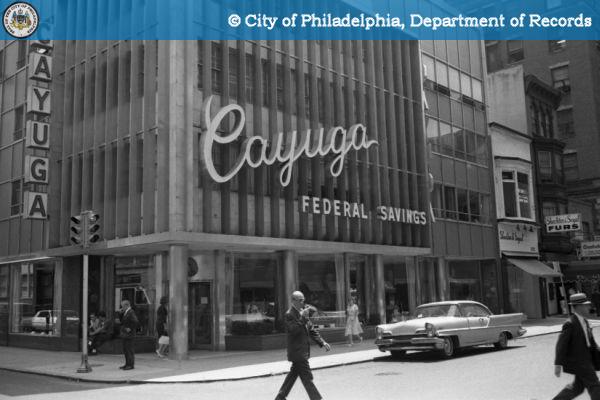
National Mechanic Bank
This 1837 Greek Revival bank at 22 South 22nd St. was designed by one of Philadelphia’s leading architects, William Strickland. It was one of his last designs in our City and among his smallest. Strong pilasters support the portico with ornate stone carvings at their tops.
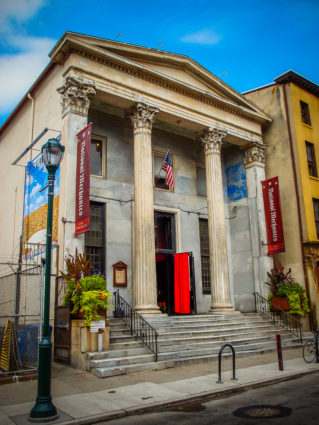
For all its elegance and grace, it could be a Temple to Athena. In 2006, it became a restaurant. Today, you can lift a glass to Strictland in what is now National Mechanics Bar and Restaurant.
These are just a few of the many Philadelphia banks, designed by the great architects of their day. While their vaults may now hold wine instead of money they continue to dazzle visitors with their architectural beauty and their history lives on. Take the time to visit them and support projects like this that preserve the legacy of our historic city. It will be a good investment of your time
This article is part of a series titled “The Secret Life of Buildings” where we cover the history and architecture behind Philadelphia’s storied buildings. We’ve written about row house styles, alleys, courtyards, and star bolts, among other topics. What else would you like to learn about? Follow us and DM us on Facebook or Instagram to let us know!





